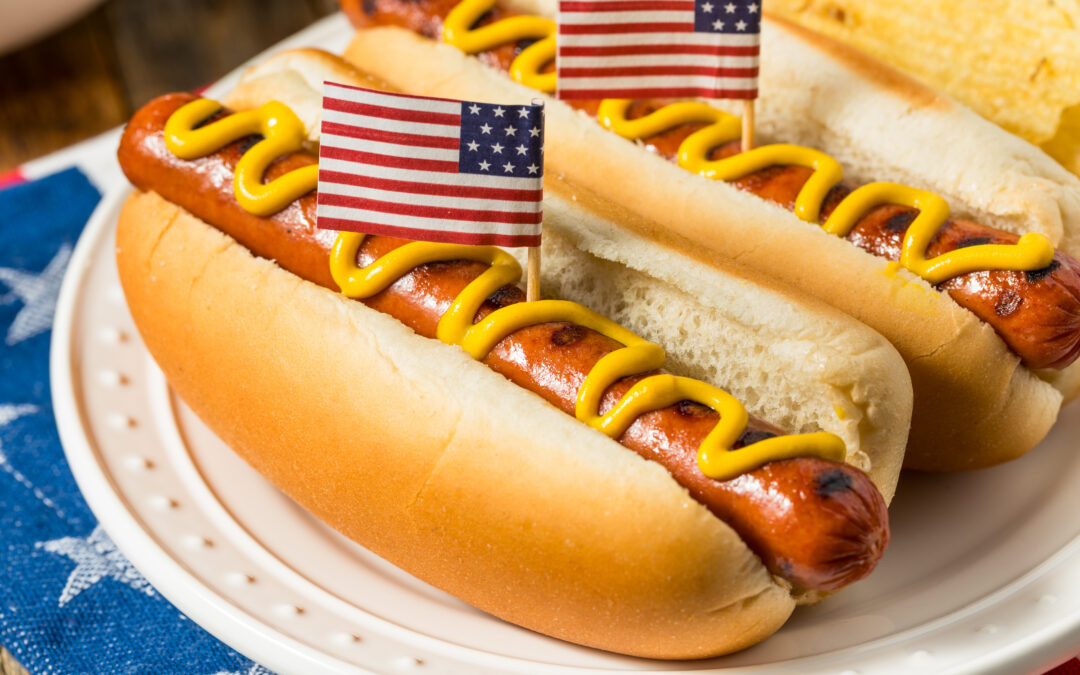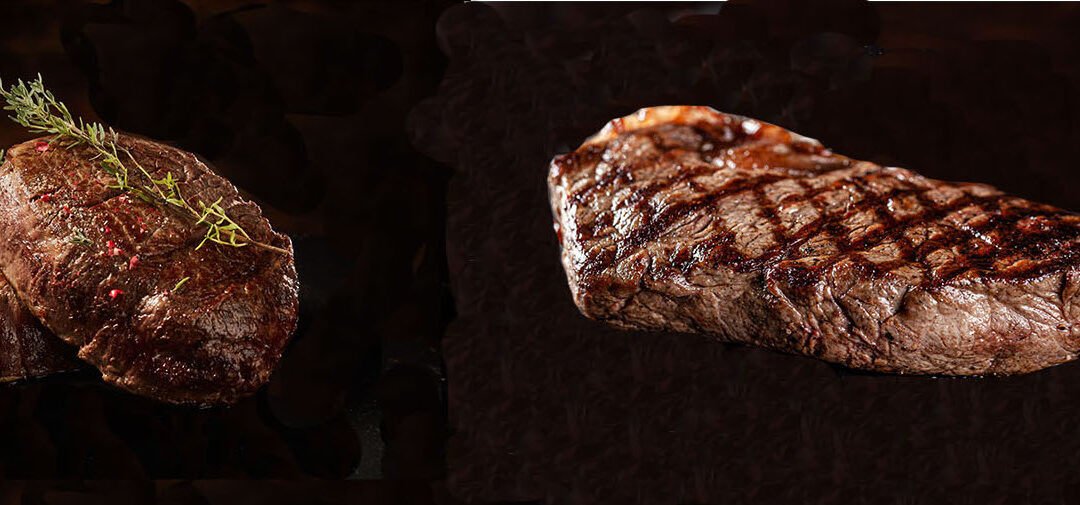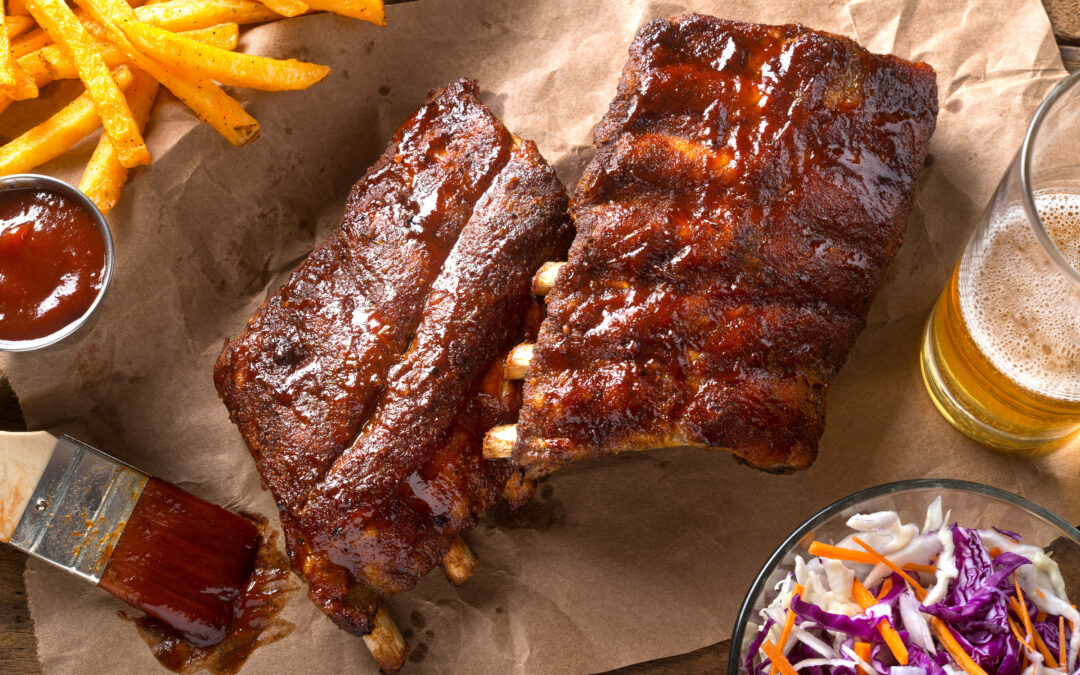You know that the grilling season in Michigan is right around the corner when you pass by your local home improvement stores and see dozens of assembled grills lined up like the start of a NASCAR race.

And yet, in a way, it is a race.
A race to get ready for that first warm weekend of outdoor grilling, family, friends and those special summer moments and memories that you’ll look back on when the feathers eventually fly late next fall.
In principle, grilling is a rather simple concept. As such, I suppose you can certainly “get by” without any advice from us.
Buy some of Cattleman’s great meats or sausages, light a fire, throw them on a metal grate, turn them once or twice.
Everyone’s hungry, no one will likely complain.
However, we’d like to suggest a few tips, which can make it SO much better, and safer.
I know, I know, no one wants to be lectured to, but we would be remiss if we didn’t make this our first tip.
TIP #1 Food safety is SO important, especially when you may likely be grilling food of different meat types (beef, chicken, pork) and doing so out in the open, and quite possibly, on a hot summer day.
Keeping each item separated from one another while raw, is essential to eliminating any food borne illnesses. The last thing anyone wants is to harm the health of their family and friends. We recommend that all protein products be kept in their own, plastic food boxes (so their juices don’t co-mingle with other meats), and at a temperature of 32 F. to 41F.
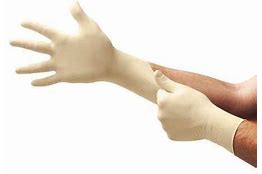
Wearing disposable vinyl or latex gloves while handling your foods to be grilled is fantastic but keep in mind, that even with those gloves on, handling both raw chicken, then raw beef or pork, is defeating the purpose of food safety. Be smart.
TIP #2 is simple. Clean your grill before, during and after you use it. A wire brush, then a clean used dampened towel, then a light spray of oil then wipe it clean again.
Let’s begin with the fact that we’re talking about grilling here. Grilling, unlike barbecuing, is relatively hot and fast, unlike barbecue which is low and slow. Where barbecue’s heat is anywhere from 190 F. to 235 F., grilling is usually 350 F plus!
That degree of temperature creates ash, and if that ash is not regularly cleaned from your grates, it can leave unattractive marks flavors on anything you’re grilling.
TIP # 3 Speaking of oil, a moderate spray of cooking oil is always helpful to prevent meats from sticking to your grilling grates.
But rather than spraying the entire grill with the oil, consider spraying only the surface of the food that you’ll be putting ON the grill.
Two good things happen here. One, you’ll use less spray (or oil) and that will save money at the same time. Two, if you were to spray the ENTIRE grill. the areas of the grill without any food on them, will eventually super heat and “burn” that oil, which in turn, will result in a bitter “off” flavor of the foods you might put on those areas of the grill later.
Not good.
You don’t necessarily have to invest in a commercial cooking spray, like Pam. Any oil with a high “smoke point”, such as canola oil, olive oil or even peanut oil will work fine.

You can buy a small re-fillable spray bottle, or, you can very lightly brush it on.

TIP #4 Time is not ALWAYS on your side.

Chefs have a credo. The French call it Mise en Place and it’s usually shortened to Meez in the kitchen. What it basically boils down to is…get your &!%$#*@! together.
Grilling can be a fun and rewarding endeavor, or, it can be hell. Especially, if, once you fire up the grill, you’re looking for some tools, a platter to put the grilled meats on, seasonings, an apron, or some hot mitts.
It’s even a bigger disaster when you’ve already got food on the grill.
Plan your work, and work your plan, is some of the best advice here. Make a list, check it twice. If it’s works for Santa, its good enough for me.
Tip #5 Now we’re cookin’!
Safety and sanitation lectures aside, and the grill is clean and prepped.
It’s time to get cookin!
Recipes are a pretty specific set of directions for one dish, what we’d like to do here, is to give you a few cooking tips all rolled into one. They are:
- Yes, keep your foods chilled well before cooking them but this sub-tip is to bring them out of the cold, (cover them) up to 1 hour before grilling.
The quasi-science is that the outer flesh will less likely “seize” and become tougher and the inner flesh will cook more evenly and be juicer. This is especially helpful for steaks of ¾” and thicker.
- Pat meats dry before lightly oiling them. This is especially important for steaks but a good rule of thumb for all solid meats (hamburgers are the exception).
Patting the meats dry will allow the oil to adhere to the flesh and will, as a result give you a better browning and a juicier piece of meat.
- Use tongs or a spatula to turn your steaks or meat over. Stabbing them with a fork will only create an open faucet for the interior juices to run out of your meats making them drier and tougher. It’s not an accident that Chef’s always have tongs in their back pocket or wrapped in a side down under their arm.
- Use a meat thermometer to test doneness.
Yes, Chefs who work the grill station in restaurants are somewhat on auto pilot when it comes to knowing when a certain meat is a certain doneness.
But they do this all day long and know their products and work in a VERY controlled heat and kitchen environment. Don’t trust an expensive piece of meat to a guess. An insta-read thermometer is the BEST meat insurance to can buy and they’re under 10 bucks.

Let it be.
No, not the song… the meat.
Allowing your grilled meats to rest for 10 to 15 minutes before slicing or serving, allows the meats to evenly re-absorb and distribute its juices, edge to edge.
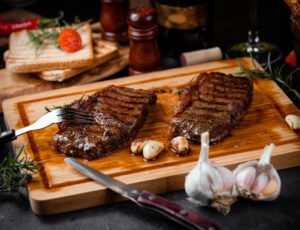
Cutting into a thick, medium-rare steak right off the grill, will show you a grey outer ring, and a very bright, pinkish red interior and eventually, a pool of juices
That same steak, allowed to rest to minutes, once cut into will be medium pink pretty much edge to edge with much less juice leaking from its tissue. That’s what you want.
- To salt or not to salt? (This is a recommendation for beef steaks or chops.)
Without getting too Chef “geeky”, in a perfect world, I’d recommend buying Cattleman’s steaks NO LESS than a full inch thick. 1 ½” is even better.
Then, we recommend removing them from the packaging, pat them dry, salt them to your preference with kosher or sea salt, place them on a wire rack and allow them to rest UNCOVERED in your fridge overnight. If you want to also add any seasoning to the salt, do it now.
The next day, before grilling, I’d allow them 1 hour to temperature acclimate, pat them dry, lightly oil them, then grill to your desired doneness with all the recommendations above.
Ok, there you have it, 5 TIPS (plus bonus tips), you can use to help make this year’s grilling one of your best yet.
Cattleman’s Meats are certainly a must. You definitely want to take advantage of our butcher’s meat and cutting experience. They are always available to answer your meat questions and make custom cuts.
Speaking of custom cuts, be sure to read our Blog on Primal Cuts which can save you money and give you those enormously thick steaks you’ve always dreamed about!



